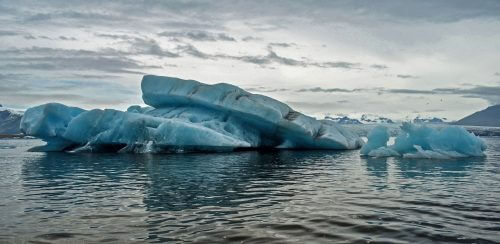The ice in the Arctic Ocean is melting faster than we previously thought and a reassessment of the rate of melting of the North Pole is required

Temperatures in the Arctic Ocean, which stretches north of Canada, Russia and Europe, are rising faster than researchers' climate models previously predicted.
Over the past 40 years, temperatures have risen by a degree and a half (cumulatively) mainly in the Burns Sea and around the islands of Norway, where they have risen by a degree and a half per decade throughout the period. This is the conclusion of a new study published in Nature Climate Change.
"The analysis of the environmental conditions in the Arctic Sea show that we clearly overestimated the rate of temperature increase in the atmosphere close to sea level, which ultimately caused the sea ice to disappear faster than we expected," explains Jens Saberberg Christensen, professor at the Niels Bohr Institute of the University of Copenhagen (NBI). and one of the research partners.
Together with his colleagues and NBI researchers from the Universities of Bergen and Oslo, the Danish Metrological Institute and the Australian National University, Christensen compared the current temperature changes in the Arctic Ocean with the climate fluctuations we know, for example, from Greenland during the Ice Age between 120,000 and 11,000 years ago.
"The sudden increase in temperature now experienced in the Arctic Ocean was observed only at the end of the last ice age. During that time, ice core analyzes revealed that the temperatures of the Greenland ice sheets rose several times, and in total between 10 and 12 degrees, over a period of 40 to 100 years," explains Jens Hasselberg Christensen.
He emphasizes that the significance of the steep increase in temperature is yet to be assessed, and that the increasing focus on the Arctic Ocean and in general on global warming is decreasing.
"Climate models need to take sudden changes into account. Until now, climate models have predicted that temperatures in the Arctic Ocean will rise slowly and steadily. However, the researchers' analysis shows that these changes are occurring at a much faster rate than expected.
"We examined the climate models analyzed and compiled by the UN Climate Panel. Only the models based on the worst-case scenario, with the highest carbon dioxide emissions, come close to measuring the increase in temperature in the Arctic Ocean over the past forty years, from 1979 to today," says Jens Hasselberg Christensen.
In the future, a stronger emphasis should be placed on the ability to predict the impact of sudden climate changes on the Arctic Ocean. Doing so will allow us to create better models that can accurately predict the rise in temperature.
"Changes are happening so quickly during the summer months that sea ice is expected to disappear faster than most climate models have ever predicted. We must continue to closely monitor temperature changes and incorporate the correct climate processes into these models," says Jens Hesbergard Christensen. He concludes: "Therefore, successful implementation of the required reductions in greenhouse gas emissions to comply with the Paris Agreement is essential to ensure that the Arctic Ocean is covered in ice all year round."
to the notice of the researchers
More of the topic in Hayadan:

One response
Scrabbling